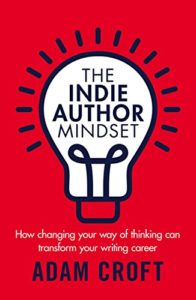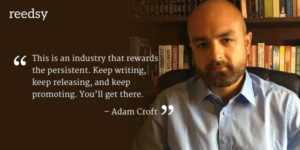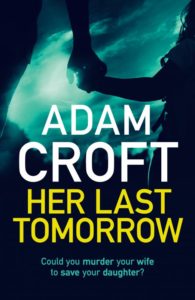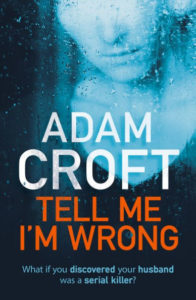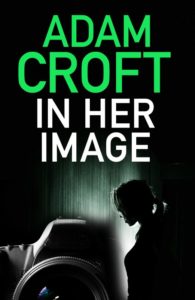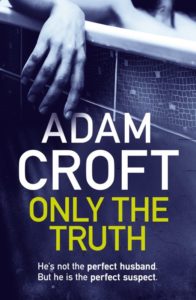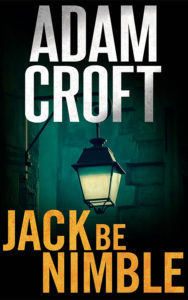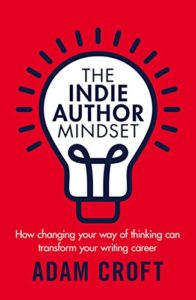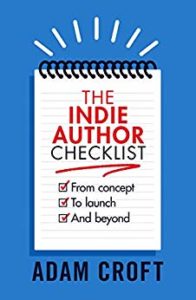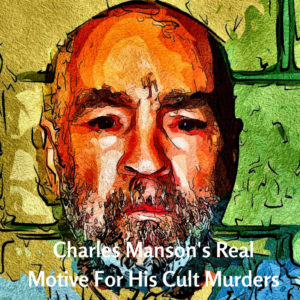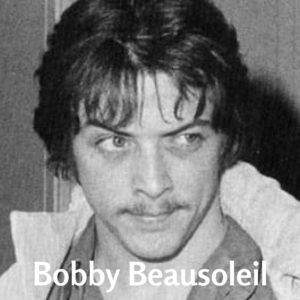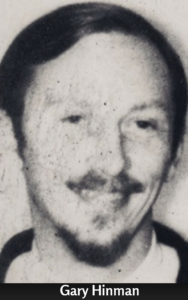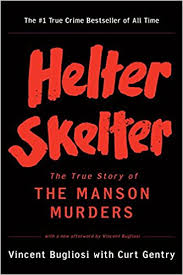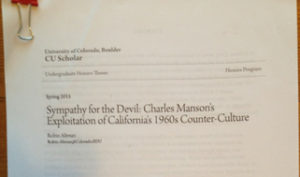 FEAR—the new book about Donald Trump in the White House by famed Washington Post investigative journalist, Bob Woodward, is a shocking look at how the current United States president behaves in and out of office. In FEAR, Woodward quotes intimate and credible sources to paint a portrait of how Trump captured the oval office, and how he chaotically attempts to control it. Today’s a pivotal point in history—not just for America, but the entire world. How long the Trump administration continues in power remains to be seen, however, right now everyone’s scrambling to understand how this bizarre guy really thinks. Maybe the Enneagram solves that.
FEAR—the new book about Donald Trump in the White House by famed Washington Post investigative journalist, Bob Woodward, is a shocking look at how the current United States president behaves in and out of office. In FEAR, Woodward quotes intimate and credible sources to paint a portrait of how Trump captured the oval office, and how he chaotically attempts to control it. Today’s a pivotal point in history—not just for America, but the entire world. How long the Trump administration continues in power remains to be seen, however, right now everyone’s scrambling to understand how this bizarre guy really thinks. Maybe the Enneagram solves that.
The Enneagram is a personality profiling assessment tool. It’s not new. The Enneagram’s been around a long time. Psychiatrists and psychologists recognize that original and unchanging personality is the main driving force shaping how a person thinks and behaves. A big question is whether people have any choice in their personality—whether they’re nurtured or natured. There’s no professional consensus on the answer. Some people seem born with personality disorders. Others appear products of their societal environment. Many probably shape their personalities from a combination of the two. Applying Enneagram psychological typing seems to cut through clinical complexity—it might help us understand Donald Trump’s real personality.
 To most people—you’re likely included—Donald Trump’s personality is how Winston Churchill described Russia—a riddle wrapped in a mystery inside an enigma. Some love Trump. Others utterly despise the man. Very few sit on the fence. But, all agree Donald Trump has pulled off some outrageous and hard to understand acts. He seems a Rubik’s Cube of psychological distortion—a squeegeed octopus with amoral appendages—an ego-stuffed turducken with multi-dimensional trussing. Trump’s puzzling persona makes everyone wonder what really makes this larger-than-life personality tick… and what he’ll do next. As I understand Enneagram personality typing, Donald Trump is the poster boy for the Enneagram’s most volatile and most vindictive psychological profile.
To most people—you’re likely included—Donald Trump’s personality is how Winston Churchill described Russia—a riddle wrapped in a mystery inside an enigma. Some love Trump. Others utterly despise the man. Very few sit on the fence. But, all agree Donald Trump has pulled off some outrageous and hard to understand acts. He seems a Rubik’s Cube of psychological distortion—a squeegeed octopus with amoral appendages—an ego-stuffed turducken with multi-dimensional trussing. Trump’s puzzling persona makes everyone wonder what really makes this larger-than-life personality tick… and what he’ll do next. As I understand Enneagram personality typing, Donald Trump is the poster boy for the Enneagram’s most volatile and most vindictive psychological profile.
The other night I Googled How To Understand Donald Trump. To no surprise, there were hundreds of hits. However, something interesting showed up in the top page return. It was an article on how a long-established, psychological profiling tool called the Enneagram dissected and typed Trump’s personality according to a fixed-choice, multi-question, pre-prepared format. If right, the Enneagram psychological typing conclusions about President Donald J. Trump’s personality are seriously disturbing—something truly to fear.
 I’d heard of the Enneagram Personality Profile but never paid much attention to it. I’m more familiar with the standard Myers-Briggs Type Indicator (MBTI) which I feel is quite reliable and accurate for an online, introspective, personality examination. The MBTI rightly slots me as a classic INTJ which pins me as a semi-introverted, quasi-perfectionist—maybe a bit of a pompous ass according to my ENFJ friends. But, enough about me and the MBTI. What about Donald Trump’s personality according to the Enneagram?
I’d heard of the Enneagram Personality Profile but never paid much attention to it. I’m more familiar with the standard Myers-Briggs Type Indicator (MBTI) which I feel is quite reliable and accurate for an online, introspective, personality examination. The MBTI rightly slots me as a classic INTJ which pins me as a semi-introverted, quasi-perfectionist—maybe a bit of a pompous ass according to my ENFJ friends. But, enough about me and the MBTI. What about Donald Trump’s personality according to the Enneagram?
Let’s look at what the Enneagram is, where it came from, and how it supposedly works. According to the official website, the Enneagram of Personality Types is a modern synthesis of ancient wisdom traditions. The website claims it’s one of the most powerful and insightful tools for understanding ourselves and others. At its core, the Enneagram helps us to see ourselves at a deeper, more objective level and can be of invaluable assistance on our path to self-knowledge.
 Don Richard Riso and Mr. Russ Hudson founded the Enneagram Institute® in 1997. They developed the world-recognized Riso-Hudson Enneagram Type Indicator (RHETI version 2.5) which is a forced-choice personality and psychological examination tool categorizing certain character traits and grouping them into contained categories. Some critics classify the Enneagram as a far-out, new-age fantasy. Others, like Fortune 500 companies, major league sports teams and leading financial institutes, incorporate the Enneagram as a valid psychological testing tool—they keep it handy inside their human resources toolbox. Even conservative Statistics Solutions rates the Enneagram as 72% reliable for a forced-choice subjective assessment aid, provided the results are interpreted properly.
Don Richard Riso and Mr. Russ Hudson founded the Enneagram Institute® in 1997. They developed the world-recognized Riso-Hudson Enneagram Type Indicator (RHETI version 2.5) which is a forced-choice personality and psychological examination tool categorizing certain character traits and grouping them into contained categories. Some critics classify the Enneagram as a far-out, new-age fantasy. Others, like Fortune 500 companies, major league sports teams and leading financial institutes, incorporate the Enneagram as a valid psychological testing tool—they keep it handy inside their human resources toolbox. Even conservative Statistics Solutions rates the Enneagram as 72% reliable for a forced-choice subjective assessment aid, provided the results are interpreted properly.
Riso and Hudson didn’t invent the Enneagram. No one really knows who did. References to the Enneagram symbol have been around since before Plato’s time, and its distinctive circle pattern containing an equilateral triangle with a mess of connecting lines between nine, evenly-spaced numbers clearly stands out as a recognizable figure. “Enneagram” stems from the Greek words ennea, meaning “nine” and gramma, meaning “written” or “drawn”. At its basic form, the Enneagram identifies individual character traits, and it forecasts how each numerical personality interacts with others around the Enneagram wheel.
Taking the Riso-Hudson Enneagram Type Indicator (RHETI 2.5) Examination
You can easily take the RHETI version 2.5 personality type indicator examination online. For $12.00 US, you can face the official RHETI test on the Enneagram Institute® website. It’s a 144 question, formatted module designed to force you into selecting an answer to character-assessment questions. There’s no right or wrong answer. To get the most accurate results, you pick the answer most appropriate to how you see yourself. You can also profile someone else with the RHETI 2.5 test, but you’d have to know them fairly well to get accurate. If you don’t want to spend twelve bucks, you can get freebies online, but they’re not as sophisticated as the real McCoy.
The RHETI 2.5 Enneagram gets quite in-depth as you drill deep. It gets heady as it moves toward the spiritual end. However, the first result will be a general character assessment based on numeric values from 1 to 9. There’s no necessarily better or worse character profile, according to the Enneagram Institute®. It’s all subjective. It’s also gender-neutral, so the questionnaire equally applies to men and women. For identity sake, the Enneagram labels each basic numeric characterization and then gives a short blurb summarizing the individual traits. These are the nine official Enneagram primary personality profiles in short form:
Type One — The Reformer is principled, purposeful, self-controlled, and perfectionistic.
Type Two — The Helper is generous, demonstrative, people-pleasing, and possessive.
Type Three — The Achiever is adaptable, excelling, driven, and image-conscious.
 Type Four — The Individualist is expressive, dramatic, self-absorbed, and temperamental.
Type Four — The Individualist is expressive, dramatic, self-absorbed, and temperamental.
Type Five — The Investigator is perceptive, innovative, secretive, and isolated.
Type Six — The Loyalist is engaging, responsible, anxious, and suspicious.
Type Seven — The Enthusiast is spontaneous, versatile, acquisitive, and scattered.
Type Eight — The Challenger is self-confident, decisive, willful, and confrontational.
Type Nine — The Peacemaker is receptive, reassuring, complacent, and resigned.
The Enneagram Institute® site goes much deeper into describing the character traits and personality makeup involved with each of the nine primary types. We’ll have a run at Donald Trump’s typing and assess his Enneagram charter identification in a bit. However, the whole picture is incomplete without knowing what else the Enneagram tool can tell.
The Enneagram Wings
Enneagram character types one through nine are primary profiles. They’re incomplete assessments without secondary types which complement or contrast the main character traits. These secondary profiles are called “Wings” in Enneagram lingo, and it’s important to know that no one is a pure personality type. All primary types are offset by Wings.
 Wings are the characterizations associated with the numbers each side of the primary types. For instance, if a person’s primary type is Number 8 – The Challenger, then their characterization wings would be Number 7 — The Enthusiast and Number 9 — The Peacemaker. Every main character around the Enneagram wheel has two wing characterizations. Wing character traits can be a positive influence on the main character. Or, they can be a negative influence.
Wings are the characterizations associated with the numbers each side of the primary types. For instance, if a person’s primary type is Number 8 – The Challenger, then their characterization wings would be Number 7 — The Enthusiast and Number 9 — The Peacemaker. Every main character around the Enneagram wheel has two wing characterizations. Wing character traits can be a positive influence on the main character. Or, they can be a negative influence.
It’s important to stop for a minute here, and read what the Enneagram Institute® says about your basic personality typing. With this, it’s easier to understand how Wings influence your primary Enneagram profile.
* Quote From Enneagram Website *
From one point of view, the Enneagram can be seen as a set of nine distinct personality types, with each number on the Enneagram denoting one type. It is common to find a little of yourself in all nine of the types, although one of them should stand out as being closest to yourself. This is your basic personality type.
Everyone emerges from childhood with one of the nine types dominating their personality, with inborn temperament and other prenatal factors being the main determinants of our type.
 This is one area where almost all of the major Enneagram authors agree—we are born with a dominant type. Subsequently, this inborn orientation largely determines the ways in which we learn to adapt to our early childhood environment. It also seems to lead to certain unconscious orientations toward our parental figures, but why this is so, we still do not know. In any case, by the time children are four or five years old, their consciousness has developed sufficiently to have a separate sense of self. Although their identity is still very fluid, at this age children begin to establish themselves and find ways of fitting into the world on their own.
This is one area where almost all of the major Enneagram authors agree—we are born with a dominant type. Subsequently, this inborn orientation largely determines the ways in which we learn to adapt to our early childhood environment. It also seems to lead to certain unconscious orientations toward our parental figures, but why this is so, we still do not know. In any case, by the time children are four or five years old, their consciousness has developed sufficiently to have a separate sense of self. Although their identity is still very fluid, at this age children begin to establish themselves and find ways of fitting into the world on their own.
Thus, the overall orientation of our personality reflects the totality of all childhood factors (including genetics) that influenced its development. (For more about the developmental patterns of each personality type, see the related section in the type descriptions in Personality Types and in The Wisdom of the Enneagram. There is a discussion of the overall theory in Understanding The Enneagram. Several more points can be made about the basic type itself:
* People do not change from one basic personality type to another.
* The descriptions of the personality types are universal and apply equally to males and females since no type is inherently masculine or feminine.
* Not everything in the description of your basic type will apply to you all the time because you fluctuate constantly among the healthy, average, and unhealthy traits that make up your personality type.
* The Enneagram uses numbers to designate each of the types because numbers are value-neutral— they imply the whole range of attitudes and behaviors of each type without specifying anything either positive or negative. Unlike the labels used in psychiatry, numbers provide an unbiased, shorthand way of indicating a lot about a person without being pejorative.
* The numerical ranking of the types is not significant. A larger number is no better than a smaller number; it is not better to be a Nine than a Two because nine is a bigger number.
* No type is inherently better or worse than any other. While all the personality types have unique assets and liabilities, some types are often considered to be more desirable than others in any given culture or group. Furthermore, for one reason or another, you may not be happy being a particular type. You may feel that your type is “handicapped” in some way.
As you learn more about all the primary Enneagram types, you’ll see just as each has unique capacities, each has different limitations. If some types are more esteemed in Western society than others, it’s because of the qualities that society rewards, not because of any superior value of those types. The ideal outcome is becoming your best self, not to imitate the assets of another type.
The Enneagram Levels of Development
 Once you’ve established your primary Enneagram personality type and identify with your prominent Wing—whether that be a higher or lower number—you need to know that the Enneagram profiling system has an internal structure within each personality type. This is a continuum of behaviors, attitudes, defenses, and motivations formed by nine identified Levels of Development. Here’s some more information right from the Enneagram Institute® website.
Once you’ve established your primary Enneagram personality type and identify with your prominent Wing—whether that be a higher or lower number—you need to know that the Enneagram profiling system has an internal structure within each personality type. This is a continuum of behaviors, attitudes, defenses, and motivations formed by nine identified Levels of Development. Here’s some more information right from the Enneagram Institute® website.
* Quote From Enneagram Website *
The Levels of Development provide a framework for seeing how all of the different traits that comprise each type fit into a large whole; they are a way of conceptualizing the underlying “skeletal” structure of each type. Without the Levels, the types can seem to be an arbitrary collection of unrelated traits, with contradictory behaviors and attitudes often part of the picture. But by understanding the Levels for each type, one can see how all of the traits are interrelated—and how healthy traits can deteriorate into average traits and possibly into unhealthy ones.
The Enneagram is reduced to a “horizontal” set of nine discrete categories. By including the Levels, however, a “vertical” dimension is added that not only reflects the complexity of human nature but goes far in explaining many different, important elements within a personality. Further, with the Levels, a dynamic element is introduced that reflects the changing nature of the personality patterns themselves.
 You have probably noticed that people change constantly—sometimes they are clearer, more free, grounded, and emotionally available, while at other times they are more anxious, resistant, reactive, emotionally volatile and less free. Understanding the Levels makes it clear that when people change states within their personality, they are shifting within the spectrum of motivations, traits, and defenses that make up their personality type.
You have probably noticed that people change constantly—sometimes they are clearer, more free, grounded, and emotionally available, while at other times they are more anxious, resistant, reactive, emotionally volatile and less free. Understanding the Levels makes it clear that when people change states within their personality, they are shifting within the spectrum of motivations, traits, and defenses that make up their personality type.
To understand an individual accurately, it is necessary to perceive where the person lies along the continuum of Levels of his or her type at a given time. In other words, one must assess whether a person is in their healthy, average, or unhealthy range of functioning. This is important because, for example, two people of the same personality type and wing will differ significantly if one is healthy and the other unhealthy. (In relationships and in the business world, understanding this distinction is crucial.)
The Continuum of the Levels of Development
 The continuum is comprised of nine internal Levels of Development. Briefly, there are three Levels in the healthy section, three Levels in the average section, and three Levels in the unhealthy section. It may help you to think of the continuum of Levels as a photographer’s grayscale which has gradations from pure white to pure black with many shades of gray in between.
The continuum is comprised of nine internal Levels of Development. Briefly, there are three Levels in the healthy section, three Levels in the average section, and three Levels in the unhealthy section. It may help you to think of the continuum of Levels as a photographer’s grayscale which has gradations from pure white to pure black with many shades of gray in between.
On the continuum, the healthiest traits appear first, at the top, so to speak. As we move down the continuum in a spiral pattern, we progressively pass through each Level of Development marking a distinct shift in the personality’s deterioration to the pure black of psychological breakdown at the bottom. The continuum for each of the personality types is as follows.
Healthy
- Level 1: The Level of Liberation
- Level 2: The Level of Psychological Capacity
- Level 3: The Level of Social Value
Average
- Level 4: The Level of Imbalance/ Social Role
- Level 5: The Level of Interpersonal Control
- Level 6: The Level of Overcompensation
Unhealthy
- Level 7: The Level of Violation
- Level 8: The Level of Obsession and Compulsion
- Level 9: The Level of Pathological Destructiveness
* Quote from Enneagram Website *
At each Level, significant psychological shifts occur as is indicated by the title we have given to it. For example, at Level 5, the Level of Interpersonal Control, the person is trying to manipulate himself and others to get his or her psychological needs met. This invariably creates interpersonal conflicts. By this Level, the person has also fully identified with the ego and does not see himself as anything more than that: the ego must, therefore, be increasingly defended and inflated for the person to feel safe and to keep their identity intact.
 If this activity does not satisfy the person, and anxiety increases, he or she may deteriorate to the next state, Level 6, the Level of Overcompensation, where their behavior will become more intrusive and aggressive as they continue to pursue their ego-agenda. Anxiety is increasing, and the person is increasingly disruptive and focused on getting his needs met, regardless of the impact on people around them.
If this activity does not satisfy the person, and anxiety increases, he or she may deteriorate to the next state, Level 6, the Level of Overcompensation, where their behavior will become more intrusive and aggressive as they continue to pursue their ego-agenda. Anxiety is increasing, and the person is increasingly disruptive and focused on getting his needs met, regardless of the impact on people around them.
One of the most profound ways of understanding the Levels is as a measure of our capacity to be present. The more we move down the Levels, the more identified we are with our ego and its increasingly negative and restrictive patterns. Our personality becomes more defensive, reactive, and automatic— and we consequently have less and less real freedom and less real consciousness. As we move down the Levels, we become caught in more compulsive, destructive actions which are ultimately self-defeating.
By contrast, the movement toward health, up the Levels, is simultaneous with being more present and awake in our minds, hearts, and bodies. As we become more present, we become less fixated in the defensive structures of our personality and are more attuned and open to ourselves and our environment. We see our personality objectively in action rather than “falling asleep” to our automatic personality patterns. There is, therefore, the possibility of “not doing” our personality and of gaining some real distance from the negative consequences of getting caught in it.
As we become more present, we see our personality traits more objectively and the Levels become a continuous guide to self-observation, a map that we can use to chart where we are in our psycho-spiritual development at any given time. As we move “up” the Levels, we discover that we are freer and less driven by compulsive, unconscious drives and therefore able to act more effectively in all areas of our lives, including in our relationships. When we are less identified with our personality, we find that we respond as needed to whatever life presents, actualizing the positive potentials in all nine types, bringing real peace, creativity, strength, joy, compassion, and other positive qualities to whatever we are doing.
Enneagram Directions of Integration (Growth) and Disintegration (Stress)
Although a tenet of Enneagram testing is that no person ever changes their basic personality type, the Enneagram Institute® recognizes an individual’s life journey is never static. People change over time. That can be for the better. Or it can be for the worse. In Enneagram terms, this change for good or bad is said to be an integration of healthy growth or a stressful and unhealthy disintegration along a living timeline. Here’s how the Enneagram website explains the Directions of Integration and Disintegration.
* Quote From Enneagram Website *
As we have seen with the Levels of Development, the nine personality types of the Enneagram are not static categories: they reflect our change over time. Further, the sequence of the types and the arrangement of the inner lines of the symbol are not arbitrary. The inner lines of the Enneagram connect the types in a sequence that denotes what each type will do under different conditions. There are two lines connected to each type, and they connect with two other types. One line connects with a type that represents how a person of the first type behaves when they are moving toward health and growth.
 This is called the Direction of Integration or Growth. The other line goes to another type that represents how the person is likely to act out if they are under increased stress and pressure—when they feel they are not in control of the situation. This second line is called the Direction of Stress or Disintegration. In other words, different situations will evoke different kinds of responses from your personality. You will respond or adapt in different directions, as indicated by the lines of the Enneagram from your basic type. Again, we see the flexibility and dynamism of the Enneagram.
This is called the Direction of Integration or Growth. The other line goes to another type that represents how the person is likely to act out if they are under increased stress and pressure—when they feel they are not in control of the situation. This second line is called the Direction of Stress or Disintegration. In other words, different situations will evoke different kinds of responses from your personality. You will respond or adapt in different directions, as indicated by the lines of the Enneagram from your basic type. Again, we see the flexibility and dynamism of the Enneagram.
The Direction of Disintegration or Stress for each type is indicated by the sequence of numbers 1-4-2-8-5-7-1. This means that an average to unhealthy One under stress will eventually behave like an average to unhealthy Four; an average to unhealthy Four will act out their stress like an average to unhealthy Two; an average to unhealthy Two will act out under stress like an Eight, an Eight will act out under stress like a Five, a Five will act out like a Seven, and a Seven will act out like a One. (An easy way to remember the sequence is to realize that 1-4 or 14 doubles to 28, and that doubles to 57—or almost so. Thus, 1-4-2-8-5-7—and the sequence returns to 1 and begins again.)
Likewise, on the equilateral triangle, the sequence is 9-6-3-9: a stressed out Nine will act out like a Six, a stressed out Six will act out like a Three, and a stressed-out Three will act out like a Nine. (You can remember this sequence if you think of the numerical values diminishing as the types become more stressed and reactive. For a longer explanation and examples, see Personality Types, 47-52, 413-8.) You can see how this works by following the direction of the arrows on the following Enneagram.
 The Direction of Integration or Growth is indicated for each type by the reverse of the sequences for disintegration. Each type moves toward integration in a direction that is the opposite of its unhealthy direction. Thus, the sequence for the Direction of Integration is 1-7-5-8-2-4-1: an integrating One goes to Seven, an integrating Seven goes to Five, an integrating Five goes to Eight, an integrating Eight goes to Two, an integrating Two goes to Four, and an integrating Four goes to One. On the equilateral triangle, the sequence is 9-3-6-9: an integrating Nine will go to Three, an integrating Three will go to Six, and an integrating Six will go to Nine. You can see how this works by following the direction of the arrows on the following Enneagram.
The Direction of Integration or Growth is indicated for each type by the reverse of the sequences for disintegration. Each type moves toward integration in a direction that is the opposite of its unhealthy direction. Thus, the sequence for the Direction of Integration is 1-7-5-8-2-4-1: an integrating One goes to Seven, an integrating Seven goes to Five, an integrating Five goes to Eight, an integrating Eight goes to Two, an integrating Two goes to Four, and an integrating Four goes to One. On the equilateral triangle, the sequence is 9-3-6-9: an integrating Nine will go to Three, an integrating Three will go to Six, and an integrating Six will go to Nine. You can see how this works by following the direction of the arrows on the following Enneagram.
It is not necessary to have separate Enneagrams for the Direction of Integration and the Direction of Disintegration. Both directions can be shown on one Enneagram by eliminating the arrows and connecting the proper points with plain lines.
The Direction of Integration (Growth)
1-7-5-8-2-4-1
9-3-6-9
The Direction of Disintegration (Stress)
1-4-2-8-5-7-1
9-6-3-9
No matter which personality type you are, the types in both your Direction of Integration or Growth and your Direction of Disintegration or Stress are important influences. To obtain a complete picture of yourself (or of someone else), you must take into consideration the basic type and wing as well as the two types in the Directions of Integration and Disintegration. The factors represented by those four types blend into your total personality and provide the framework for understanding the influences operating in you. For example, no one is simply a personality type Two. A Two has either a One-wing or a Three-wing, and the Two’s Direction of Disintegration (Eight) and its Direction of Integration (Four) also play important parts in his or her overall personality.
 Ultimately, the goal is for each of us to “move around” the Enneagram, integrating what each type symbolizes and acquiring the healthy potentials of all the types. The ideal is to become a balanced, fully functioning person who can draw on the power (or from the Latin, “virtue”) of each as needed. Each of the types of the Enneagram symbolizes different important aspects of what we need to achieve this end. The personality type we begin life with is, therefore, less important ultimately than how well (or badly) we use our type as the beginning point for our self-development and self-realization.
Ultimately, the goal is for each of us to “move around” the Enneagram, integrating what each type symbolizes and acquiring the healthy potentials of all the types. The ideal is to become a balanced, fully functioning person who can draw on the power (or from the Latin, “virtue”) of each as needed. Each of the types of the Enneagram symbolizes different important aspects of what we need to achieve this end. The personality type we begin life with is, therefore, less important ultimately than how well (or badly) we use our type as the beginning point for our self-development and self-realization.
The Three Enneagram Instincts
If you didn’t think the Enneagram Personality Typing model was complicated enough, you need to take a look at another driver steering this psychological assessment tool. Regardless of your primary personality type, your wings, and whether you’re on an integration or disintegration journey, something else comes into play that guides your behavior. This is the instinctual structure you were born with. Again, it’s best to read how the Enneagram site explains the three human instincts and how they affect personality.
* Quote From Enneagram Website *
The three Instincts (often erroneously called “the subtypes”) are a third set of distinctions that are extremely important for understanding personality. A major aspect of human nature lies in our instinctual “hard-wiring” as biological beings. We each are endowed with specific instinctual intelligences that are necessary for our survival as individuals and as a species. We each have a self-preservation instinct (for preserving the body and its life and functioning), a sexual instinct (for extending ourselves in the environment and through the generations), and a social instinct (for getting along with others and forming secure social bonds).
 While we have all three Instincts in us, one of them is the dominant focus of our attention and behavior—the set of attitudes and values that we are most attracted to and comfortable with. We each also have a second Instinct that is used to support the dominant Instinct, as well as a third Instinct that is the least developed—a real blind spot in our personality and our values. Which instinct is in each of these three places—most, middle, and least developed—produces what we call our “Instinctual Stack” (like a three-layer cake) with your dominant Instinct on top, the next most developed Instinct in the middle, and the least developed on the bottom).
While we have all three Instincts in us, one of them is the dominant focus of our attention and behavior—the set of attitudes and values that we are most attracted to and comfortable with. We each also have a second Instinct that is used to support the dominant Instinct, as well as a third Instinct that is the least developed—a real blind spot in our personality and our values. Which instinct is in each of these three places—most, middle, and least developed—produces what we call our “Instinctual Stack” (like a three-layer cake) with your dominant Instinct on top, the next most developed Instinct in the middle, and the least developed on the bottom).
These instinctual drives profoundly influence our personalities, and at the same time, our personalities largely determine how each person prioritizes these instinctual needs. Thus, while every human being has all three of these instincts operating in him or her, our personality causes us to be more concerned with one of these instincts than the other two. We call this instinct our dominant instinct. This tends to be our first priority—the area of life we attend to first. But when we are more caught up in the defenses of our personality—further down the Levels of Development— our personality most interferes with our dominant instinct.
 Further, the Enneagram type flavors the way in which we approach our dominant instinctual need. Combining our Enneagram type with our dominant instinct yields a much more specific portrait of the workings of our personality. When we apply the distinctions of these three instincts to the nine Enneagram types they create 27 unique combinations of type and dominant instinct that account for differences and variability within the types. We call these combinations the Instinctual Variants.
Further, the Enneagram type flavors the way in which we approach our dominant instinctual need. Combining our Enneagram type with our dominant instinct yields a much more specific portrait of the workings of our personality. When we apply the distinctions of these three instincts to the nine Enneagram types they create 27 unique combinations of type and dominant instinct that account for differences and variability within the types. We call these combinations the Instinctual Variants.
The Enneagram Institute® offers an online test, the Instinctual Variants Questionnaire (IVQ), for helping people determine not only their dominant instinct but also their Instinctual Stack. The IVQ also provides a detailed personality profile derived from the combination of the test taker’s Enneagram type, wing, and Instinctual Stack.
Here are brief descriptions of the three instincts from the Enneagram Website:
Self Preservation Instinct
People who have this as their dominant instinct are preoccupied with the safety, comfort, health, energy, and well-being of the physical body. In a word, they are concerned with having enough resources to meet life’s demands. Identification with the body is a fundamental focus for all humans, and we need our body to function well in order to be alive and active in the world. Most people in contemporary cultures have not faced life or death “survival” in the strictest sense; thus, Self-Preservation types tend to be concerned with food, money, housing, medical matters, and physical comfort.
 Moreover, those primarily focused on self-preservation, by extension, are usually interested in maintaining these resources for others as well. Their focus of attention naturally goes towards things related to these areas such as clothes, temperature, shopping, decorating, and the like, particularly if they are not satisfied in these areas or have a feeling of deficiency due to their childhoods. Self-Pres types tend to be more grounded, practical, serious, and introverted than the other two instinctual types. They might have active social lives and a satisfying intimate relationship, but if they feel that their self-preservation needs are not being met, still tend not to be happy or at ease. In their primary relationships, these people are “nesters”—they seek domestic tranquility and security with a stable, reliable partner.
Moreover, those primarily focused on self-preservation, by extension, are usually interested in maintaining these resources for others as well. Their focus of attention naturally goes towards things related to these areas such as clothes, temperature, shopping, decorating, and the like, particularly if they are not satisfied in these areas or have a feeling of deficiency due to their childhoods. Self-Pres types tend to be more grounded, practical, serious, and introverted than the other two instinctual types. They might have active social lives and a satisfying intimate relationship, but if they feel that their self-preservation needs are not being met, still tend not to be happy or at ease. In their primary relationships, these people are “nesters”—they seek domestic tranquility and security with a stable, reliable partner.
Sexual (aka “Attraction”) Instinct
Many people originally identify themselves as this type because they have learned that the Sexual types are interested in “one-on-one relationships.” But all three instinctual types are interested in one-on-one relationships for different reasons, so this does not distinguish them. The key element in Sexual types is an intense drive for stimulation and a constant awareness of the “chemistry” between themselves and others. Sexual types are immediately aware of the attraction, or lack thereof, between themselves and other people. Further, while the basis of this instinct is related to sexuality, it is not necessarily about people engaging in the sexual act. There are many people that we are excited to be around for reasons of personal chemistry that we have no intention of “getting involved with.” Nonetheless, we might be aware that we feel stimulated in certain people’s company and less so in others.
 The sexual type is constantly moving toward that sense of intense stimulation and juicy energy in their relationships and in their activities. They are the most “energized” of the three instinctual types and tend to be more aggressive, competitive, charged, and emotionally intense than the Self-Pres or Social types. Sexual types need to have intense energetic charge in their primary relationships or else they remain unsatisfied. They enjoy being intensely involved—even merged—with others and can become disenchanted with partners who are unable to meet their need for intense energetic union. Losing yourself in a “fusion” of being is the ideal here, and Sexual types are always looking for this state with others and with stimulating objects in their world.
The sexual type is constantly moving toward that sense of intense stimulation and juicy energy in their relationships and in their activities. They are the most “energized” of the three instinctual types and tend to be more aggressive, competitive, charged, and emotionally intense than the Self-Pres or Social types. Sexual types need to have intense energetic charge in their primary relationships or else they remain unsatisfied. They enjoy being intensely involved—even merged—with others and can become disenchanted with partners who are unable to meet their need for intense energetic union. Losing yourself in a “fusion” of being is the ideal here, and Sexual types are always looking for this state with others and with stimulating objects in their world.
Social (aka “Adaptive”) Instinct
Just as many people tend to misidentify themselves as Sexual types because they want one-on-one relationships, many people fail to recognize themselves as Social types because they get the (false) idea that this means always being involved in groups, meetings, and parties. If Self-Preservation types are interested in adjusting the environment to make themselves more secure and comfortable, Social types adapt themselves to serve the needs of the social situation they find themselves in.
 Thus, Social types are highly aware of other people, whether they are in intimate situations or in groups. They are also aware of how their actions and attitudes are affecting those around them. Moreover, Sexual types seek intimacy, Social types seek personal connection: they want to stay in long-term contact with people and to be involved in their world.
Thus, Social types are highly aware of other people, whether they are in intimate situations or in groups. They are also aware of how their actions and attitudes are affecting those around them. Moreover, Sexual types seek intimacy, Social types seek personal connection: they want to stay in long-term contact with people and to be involved in their world.
Social types are the most concerned with doing things that will have some impact on their community, or even broader domains. They tend to be warmer, more open, engaging, and socially responsible than the other two types. In their primary relationships, they seek partners with whom they can share social activities, wanting their intimates to get involved in projects and events with them. Paradoxically, they actually tend to avoid long periods of exclusive intimacy and quiet solitude, seeing both as potentially limiting. Social types lose their sense of identity and meaning when they are not involved with others in activities that transcend their individual interests.
 Interpreting the Riso-Hudson Enneagram Type Indicator (RHETI 2.5) Examination
Interpreting the Riso-Hudson Enneagram Type Indicator (RHETI 2.5) Examination
By now you’re probably mentally assessing yourself with the Enneagram, as well as Donald Trump who’s the target of this blog post. I did the same thing as I put this piece together. Being curious, I paid the money and took the test. Not surprising, my primary type is 1 — The Reformer and my prominent Wing is 9 — The Peacemaker. My Enneagram results are exactly in line with my Myers-Briggs Personality Indicator test as an INTJ. It seems I’m a healthy 2 at the level of psychological capacity and my instinctual priorities are predominately self-preservation, followed by social sympathies, with a sexual need trailing last. Okay, I’m now pushing 62 so I’m fine with that.
But what about Trump?
 Where does this guy fit into the Enneagram Personality Profile Typing? Well, I don’t know Donald Trump well enough to answer the 144 questions, but I’ll defer to the original article I read about this. Donald J. Trump is clearly an 8 — The Challenger with a strong Wing as 7 — The Enthusiast. Drilling deeper, Trump appears to be on an unhealthy continuum development disintegration. He’s certainly at a Level 8 and probably approaching a 9 — the level of pathological destructiveness. Further, Trump is instinctively dominated by self-preservation followed by sexual needs. According to Enneagram parameters, Trump has little, if no, instinctive regard for social values.
Where does this guy fit into the Enneagram Personality Profile Typing? Well, I don’t know Donald Trump well enough to answer the 144 questions, but I’ll defer to the original article I read about this. Donald J. Trump is clearly an 8 — The Challenger with a strong Wing as 7 — The Enthusiast. Drilling deeper, Trump appears to be on an unhealthy continuum development disintegration. He’s certainly at a Level 8 and probably approaching a 9 — the level of pathological destructiveness. Further, Trump is instinctively dominated by self-preservation followed by sexual needs. According to Enneagram parameters, Trump has little, if no, instinctive regard for social values.
Donald Trump’s Personality According to Enneagram Psychological Typing
Let’s take a better look at how the Enneagram website describes a Type 8 personality. You likely don’t know Trump personally either, but I’m sure you’ve heard and seen enough about him to form an impression and see if this fits. Here’s more information straight from the Enneagram Institute®.
* Quote From Enneagram Website *
Type Eight in Brief
 Eights are self-confident, strong, and assertive. Protective, resourceful, straight-talking, and decisive, but can also be ego-centric and domineering. Eights feel they must control their environment, especially people, sometimes becoming confrontational and intimidating. Eights typically have problems with their tempers and with allowing themselves to be vulnerable. At their Best: self- mastering, they use their strength to improve others’ lives, becoming heroic, magnanimous, and inspiring.
Eights are self-confident, strong, and assertive. Protective, resourceful, straight-talking, and decisive, but can also be ego-centric and domineering. Eights feel they must control their environment, especially people, sometimes becoming confrontational and intimidating. Eights typically have problems with their tempers and with allowing themselves to be vulnerable. At their Best: self- mastering, they use their strength to improve others’ lives, becoming heroic, magnanimous, and inspiring.
- Basic Fear: Of being harmed or controlled by others
- Basic Desire: To protect themselves (to be in control of their own life
and destiny) - Enneagram Eight with a Seven-Wing: “The Maverick”
- Enneagram Eight with a Nine-Wing: “The Bear”
- Key Motivations: Want to be self-reliant, to prove their strength and resist weakness, to be important in their world, to dominate the environment, and to stay in control of their situation.
The Meaning of the Arrows (in brief)
When moving in their Direction of Disintegration (stress), self-confident Eights suddenly become secretive and fearful at Five. However, when moving in their Direction of Integration (growth), lustful, controlling Eights become more open-hearted and caring, like healthy Twos. Learn more about the arrows.
Examples: G.I. Gurdjieff, Richard Wagner, Franklin D. Roosevelt, Winston Churchill, Oskar Schindler, Fidel Castro, Martin Luther King, Jr., Lyndon Johnson, Mikhail Gorbachev, Golda Meir, Indira Gandhi, Saddam Hussein, Senator John McCain, *** Donald Trump *** , Pablo Picasso, Ernest Hemingway, Norman Mailer, Toni Morrison, Serena Williams, James Brown, Aretha Franklin, Keith Richards, Queen Latifah, Courtney Love, Jack Black, Chrissie Hynde, Pink, John Wayne, Frank Sinatra, Humphrey Bogart, Lauren Bacall, Bette Davis, Mae West, Sean Connery, Paul Newman, Clint Eastwood, Tommy Lee Jones, Jack Nicholson, Susan Sarandon, Russell Crowe, Sean Penn, Harvey Keitel, Matt Damon, Alec Baldwin, Roseanne Barr, Barbara Walters, Rosie O’Donnell, “Dr. Phil” McGraw, “Tony Soprano”
* Quote From Enneagram Website *
Type Eight Overview
We have named personality type Eight The Challenger because, of all the types, Eights enjoy taking on challenges themselves as well as giving others opportunities that challenge them to exceed themselves in some way. Eights are charismatic and have the physical and psychological capacities to persuade others to follow them into all kinds of endeavors—from starting a company to rebuilding a city, to running a household, to waging war, to making peace.
 Eights have enormous willpower and vitality, and they feel most alive when they are exercising these capacities in the world. They use their abundant energy to effect changes in their environment—to “leave their mark” on it—but also to keep the environment, and especially other people, from hurting them and those they care about. At an early age, Eights understand that this requires strength, will, persistence, and endurance—qualities that they develop in themselves and which they look for in others.
Eights have enormous willpower and vitality, and they feel most alive when they are exercising these capacities in the world. They use their abundant energy to effect changes in their environment—to “leave their mark” on it—but also to keep the environment, and especially other people, from hurting them and those they care about. At an early age, Eights understand that this requires strength, will, persistence, and endurance—qualities that they develop in themselves and which they look for in others.
Thayer is a stockbroker who has worked intensively on understanding her type Eight personality. She recounts a childhood incident in which she could clearly see the development of this pattern.
“Much of my tenacity and toughness comes from my Dad. He always told me not to ‘let anybody push you around.’ It was not okay to cry. I learned to master my weaker side early on. At the tender age of eight, a huge horse ran away with me. When an adult caught the horse, I resolutely dismounted without a tear. I could tell my father was proud.”
 Eights do not want to be controlled or to allow others to have power over them (their Basic Fear), whether the power is psychological, sexual, social, or financial. Much of their behavior is involved with making sure that they retain and increase whatever power they have for as long as possible. An Eight may be a general or a gardener, a small businessman or a mogul, the mother of a family or the superior of a religious community. No matter: being “in charge” and leaving their imprint on their sphere is uniquely characteristic of them.
Eights do not want to be controlled or to allow others to have power over them (their Basic Fear), whether the power is psychological, sexual, social, or financial. Much of their behavior is involved with making sure that they retain and increase whatever power they have for as long as possible. An Eight may be a general or a gardener, a small businessman or a mogul, the mother of a family or the superior of a religious community. No matter: being “in charge” and leaving their imprint on their sphere is uniquely characteristic of them.
Eights are the true “rugged individualists” of the Enneagram. More than any other type, they stand alone. They want to be independent and resist being indebted to anyone. They often refuse to “give in” to social convention, and they can defy fear, shame, and concern about the consequences of their actions. Although they are usually aware of what people think of them, they do not let the opinions of others sway them. They go about their business with a steely determination that can be awe-inspiring, even intimidating to others.
 Although, to some extent, Eights fear physical harm, far more important is their fear of being disempowered or controlled in some way. Eights are extraordinarily tough and can absorb a great deal of physical punishment without complaint—a double-edged blessing since they often take their health and stamina for granted and overlook the health and well-being of others as well. Yet they are desperately afraid of being hurt emotionally and will use their physical strength to protect their feelings and keep others at a safe emotional distance. Beneath the tough façade is vulnerability, although it has been covered over by a layer of emotional armor.
Although, to some extent, Eights fear physical harm, far more important is their fear of being disempowered or controlled in some way. Eights are extraordinarily tough and can absorb a great deal of physical punishment without complaint—a double-edged blessing since they often take their health and stamina for granted and overlook the health and well-being of others as well. Yet they are desperately afraid of being hurt emotionally and will use their physical strength to protect their feelings and keep others at a safe emotional distance. Beneath the tough façade is vulnerability, although it has been covered over by a layer of emotional armor.
Thus, Eights are often extremely industrious, but at the price of losing emotional contact with many of the people in their lives. Those close to them may become increasingly dissatisfied with this state of affairs, which confounds Eights. (“I don’t understand what my family is complaining about. I bust my hump to provide for them. Why are they disappointed with me?”)
When this happens, Eights feel misunderstood and may distance themselves further. In fact, beneath their imposing exterior, Eights often feel hurt and rejected, although this is something they seldom talk about because they have trouble admitting their vulnerability to themselves, let alone to anyone else. Because they fear that they will be rejected (divorced, humiliated, criticized, fired, or harmed in some way), Eights attempt to defend themselves by rejecting others first. The result is that average Eights become blocked in their ability to connect with people or to love since love gives the other power over them, reawakening their Basic Fear.
The more Eights build up their egos in order to protect themselves, the more sensitive they become to any real or imaginary slight to their self-respect, authority, or preeminence. The more they attempt to make themselves impervious to hurt or pain (whether physical or emotional), the more they “shut down” emotionally to become hardened and rock-like.
When Eights are emotionally healthy, however, they have a resourceful, “can-do” attitude as well as a steady inner drive. They take the initiative and make things happen with a great passion for life. They are honorable and authoritative—natural leaders who have a solid, commanding presence. Their groundedness gives them abundant “common sense” as well as the ability to be decisive. Eights are willing to “take the heat,” knowing that any decision cannot please everyone. But as much as possible, they want to look after the interests of the people in their charge without playing favorites. They use their talents and fortitude to construct a better world for everyone in their lives.
Type Eight—Levels of Development
Healthy Levels
Level 1 (At Their Best): Become self-restrained and magnanimous, merciful and forbearing, mastering self through their self-surrender to a higher authority. Courageous, willing to put self in serious jeopardy to achieve their vision and have a lasting influence. May achieve true heroism and historical greatness.
 Level 2: Self-assertive, self-confident, and strong: have learned to stand up for what they need and want. A resourceful “can do” attitude and passionate inner drive.
Level 2: Self-assertive, self-confident, and strong: have learned to stand up for what they need and want. A resourceful “can do” attitude and passionate inner drive.
Level 3: Decisive, authoritative, and commanding: the natural leader others look up to. Take initiative, make things happen: champion people, provider, protective, and honorable, carrying others with their strength.
Average Levels
Level 4: Self-sufficiency, financial independence, and having enough resources are important concerns: become enterprising, pragmatic, “rugged individualists,” wheeler-dealers. Risk-taking, hardworking, denying own emotional needs.
 Level 5: Begin to dominate their environment, including others: want to feel that others are behind them, supporting their efforts. Swaggering, boastful, forceful, and expansive: the “boss” whose word is law. Proud, egocentric, want to impose their will and vision on everything, not seeing others as equals or treating them with respect.
Level 5: Begin to dominate their environment, including others: want to feel that others are behind them, supporting their efforts. Swaggering, boastful, forceful, and expansive: the “boss” whose word is law. Proud, egocentric, want to impose their will and vision on everything, not seeing others as equals or treating them with respect.
Level 6: Become highly combative and intimidating to get their way: confrontational, belligerent, creating adversarial relationships. Everything a test of wills, and they will not back down. Use threats and reprisals to get obedience from others, to keep others off balance and insecure. However, unjust treatment makes others fear and resent them, possibly also band together against them.
Unhealthy Levels
Level 7: Defying any attempt to control them, become completely ruthless, dictatorial, “might makes right.” The criminal and outlaw, renegade, and con-artist. Hard-hearted, immoral and potentially violent.
 Level 8: Develop delusional ideas about their power, invincibility, and ability to prevail: megalomania, feeling omnipotent, invulnerable. Recklessly over-extending self.
Level 8: Develop delusional ideas about their power, invincibility, and ability to prevail: megalomania, feeling omnipotent, invulnerable. Recklessly over-extending self.
Level 9: If they get in danger, they may brutally destroy everything that has not conformed to their will rather than surrender to anyone else. Vengeful, barbaric, murderous. Sociopathic tendencies. Generally corresponds to the Antisocial Personality Disorder.
Understanding Donald Trump’s Personality
If the Enneagram Psychological Assessment model is reliable, Donald Trump comes across as a horrible personality—a man with little moral conviction and no regard for anyone but himself. He’s a true megalomaniac, a narcissist, a demagogue, and pathological liar.
Donald Trump is not a politician. He never held an elected position prior to being sworn-in as President of the United States of America. Not a senator. Not a representative. Not a governor. Not a mayor, a counselor, nor even serving on the parks or school board. Now he’s the Commander-in-Chief of the American Armed Forces with codes to nuclear weapons.
 In my opinion—and this is only my opinion—Donald Trump is a salesman building his brand to be noticed and make money by gaining power through fear. He’s a realtor who developed a larger-than-life public persona and hood-winked voters to scam the election. Trump is a fraud. He’s a charlatan, a flimflammer, a grifter, and an unscrupulous confidence man who sells snake oil. A carny. Trump is amoral. He’s a confrontational bully, a cheat, and should be a convicted felon and racketeer. A hustler… a swindler… a coward… a thief…
In my opinion—and this is only my opinion—Donald Trump is a salesman building his brand to be noticed and make money by gaining power through fear. He’s a realtor who developed a larger-than-life public persona and hood-winked voters to scam the election. Trump is a fraud. He’s a charlatan, a flimflammer, a grifter, and an unscrupulous confidence man who sells snake oil. A carny. Trump is amoral. He’s a confrontational bully, a cheat, and should be a convicted felon and racketeer. A hustler… a swindler… a coward… a thief…
Donald Trump is the elected president of the world’s most powerful country, economically and militarily. His personality—as I understand it—makes Trump psychologically unfit to administer his public office. At this point, it seems Donald Trump is bottoming to a Level 9 of Pathological Destructiveness as the Russia probe, his personal finance investigation, his control on Congress slips through mid-term Republican Party dysfunction, and those close to him jump ship—ratting out before they sink.
I don’t profess to thoroughly understand Donald Trump’s personality. Will Donald Trump melt down into a volatile and vindictive psychopath as the Enneagram predicts? If forced out, will Trump do something more outrageous than ever before? Can he scuttle the country? Does Trump have an Armageddon exit plan? Will he dance in the Washington bunker? Is Donald Trump someone every person on this planet should truly FEAR?




